Learn how to make Cacao Tea that's rich, creamy, and surprisingly low-cal! You can make it in three different ways, and it takes just 5 minutes to make no matter which method you choose.
For more chocolate drink recipes, check out my chocolate boba recipe or spiced Mexican hot chocolate.
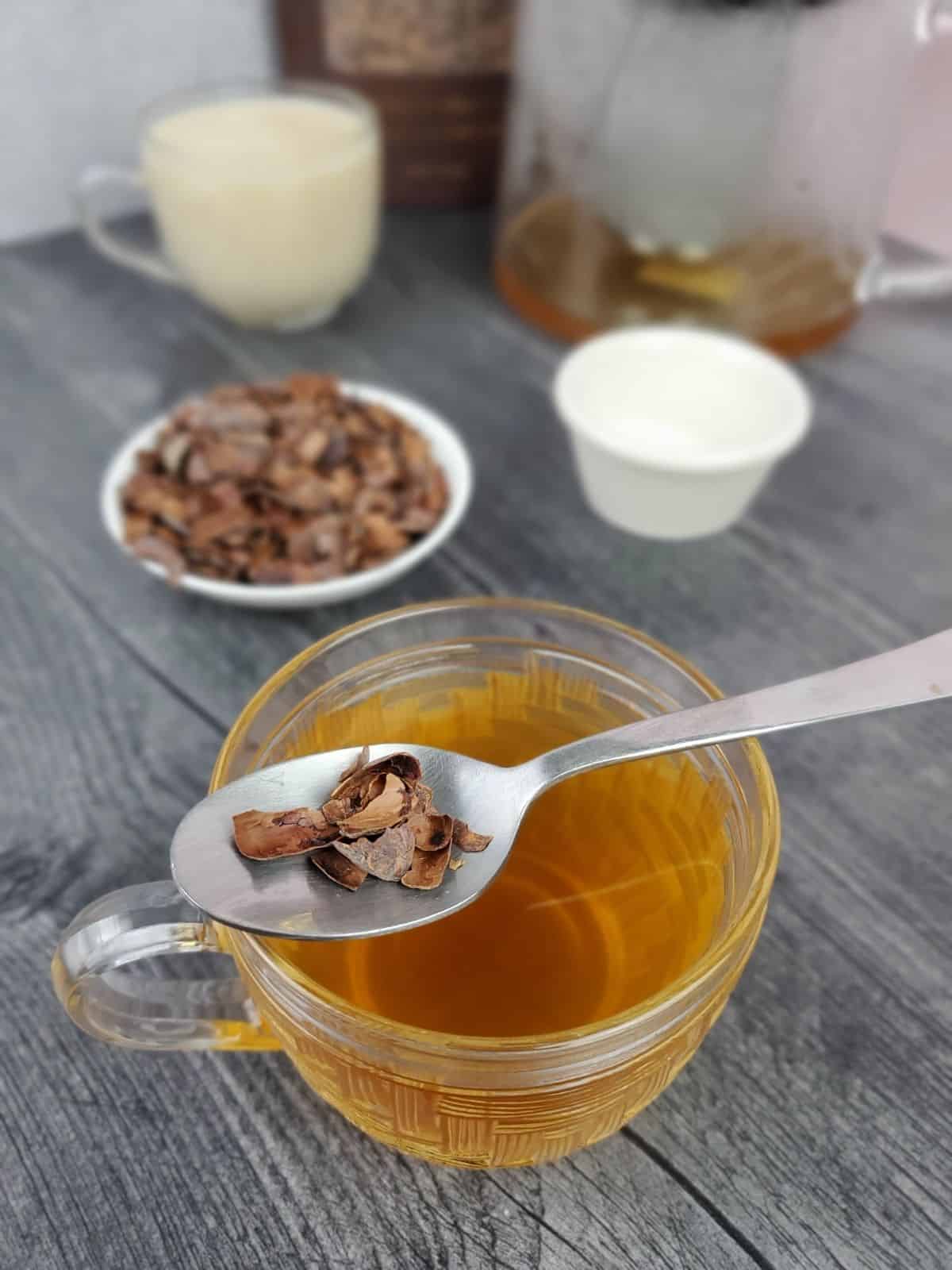
Jump to:
🍵 What is Cacao Tea?
Cacao tea is a unique beverage made from the husks or shells of cacao beans, which are the seeds of the cacao tree (Theobroma cacao), which are themselves used to make chocolate. After the cacao beans are harvested and processed, the husks are often discarded, but they can also be brewed to make a light and subtly chocolate-flavored tea.
This tea is virtually caffeine-free, making it an excellent alternative for those who want to avoid the stimulation of traditional tea or coffee. The tea has a mild natural sweetness and earthy taste, and can be enjoyed on its own or with added sweeteners or spices for extra flavor.
With its negligible caffeine content, it can be enjoyed in the morning or evening, either hot or iced. In the morning, cacao tea can provide a gentle mood boost to kickstart your day, while in the evening, it can help satisfy a chocolate craving without disrupting your sleep.
Try to buy organic cacao husk tea, if there's the option, but it's not 100% necessary.
✔️ Why This Recipe Works
Flexible Recipe: whatever cocoa product you have on hand, from whole cacao beans to some old cocoa powder, it can be brewed to extract that delectable cacao flavor (detailed below).
Low-Calorie Hot Cocoa: no matter which flavors you add to the mix, sweetener and creamer are optional while the flavor is always huge. My favorite preparation is a cup of cocoa tea plus a huge spoon of calorie-free allulose sweetner and an ounce of cream, shaken and served over ice for a 100 calorie cup of rich iced cocoa!
Batching-Friendly: it's extremely easy to make a huge batch of cocoa tea to the exact strength you prefer, then pour it into a large jar or jug and keep it in the fridge for up to 5 days (or frozen as ice cubes indefinitely).
🎓 Health Benefits of Cacao Husk Tea
Cacao husk tea is not only a delicious beverage, but it's also been rightfully praised for its health benefits. Most notably, it has a rich antioxidant profile, meaning it can help protect the body against damage from free radicals.
Antioxidants such as the polyphenols found in cacao and cacao tea contribute to overall health by supporting heart health, reducing inflammation, and offering protection against certain diseases caused or worsened by oxidative stress.
The tea also contains essential nutrients, like magnesium and potassium, that help support cardiovascular health and muscle function. These electrolytes are required by the body to maintain proper hydration, so cacao tea also helps maintain fluid balance.
Furthermore, cacao shell tea contains small amounts of theobromine and caffeine, both alkaloids that have been found to improve mood and provide a sense of relaxation, making it a great beverage to enjoy no matter the time of day.
Cacao tea can also be incorporated into other recipes, such as:
- Smoothies: Blend cacao tea ice cubes with your favorite fruits, greens, and protein powder for an energizing and nutritious smoothie.
- Hot Cocoa: Replace traditional cocoa powder and milk with cacao tea in your hot cocoa recipe for a richer, less processed chocolaty treat.
- Oatmeal: Infuse your breakfast oatmeal with brewed cacao tea instead of water or milk for a nutrient-rich and flavorful start to your day.
🍫 Ingredients
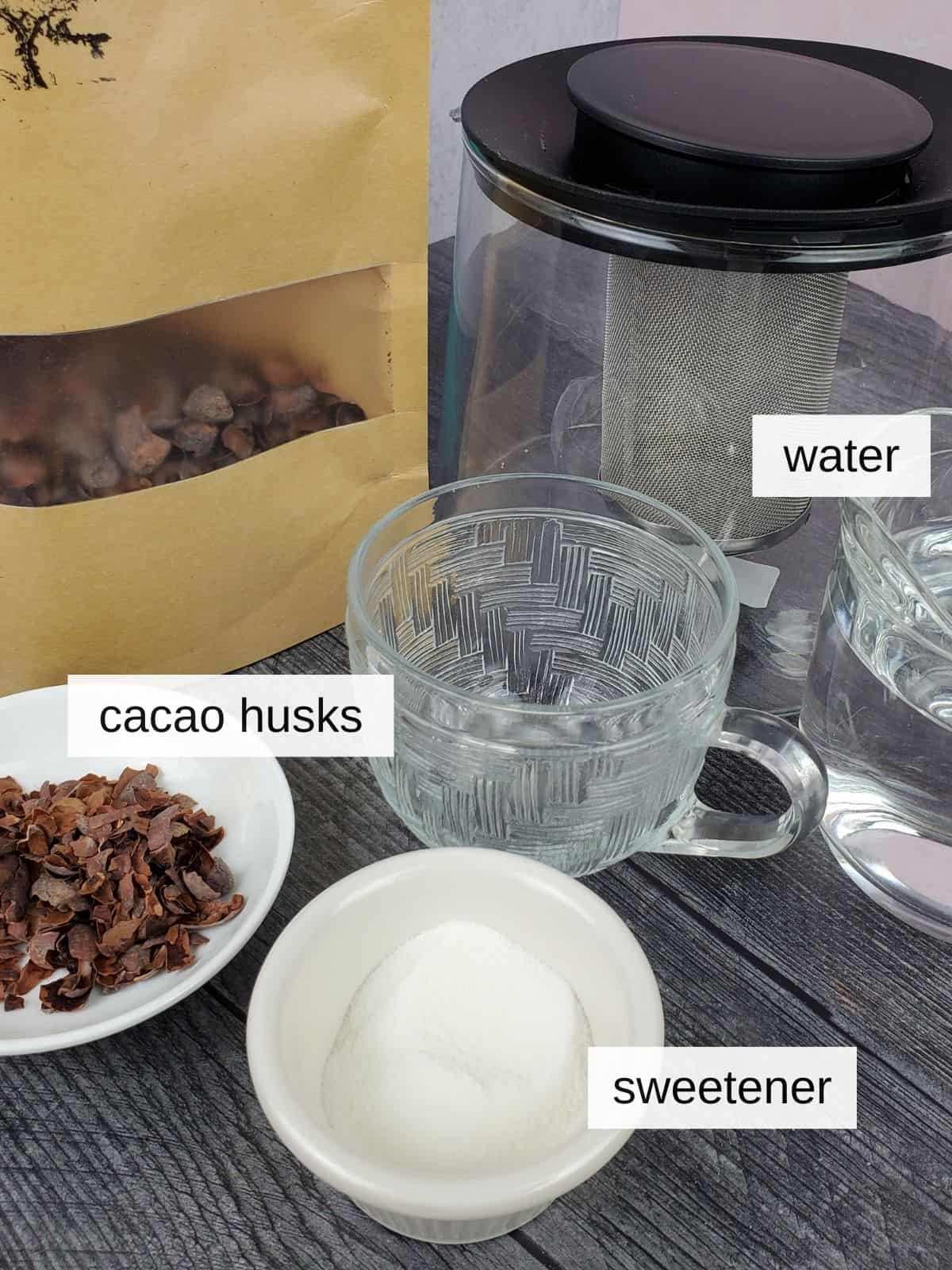
Cacao Husks or Nibs: These are the primary ingredient in cacao tea and will determine the flavor and intensity of your tea. You can find both options online or at specialty stores, or use coco apowder as detailed below.
Hot Water: The temperature of the water is important for extracting the flavors from the cacao. Aim to use boiling water, heated to around 200°F (93°C) for the best results.
Sweetener (optional): If you prefer a sweeter flavor, you can add a natural sweetener like honey, stevia, or maple syrup to suit your flavor preferences.
Milk or Dairy Alternative (optional): If you enjoy a creamier texture, feel free to add your favorite milk or dairy alternative like almond, soy, or coconut milk (I like heavy cream or half & half).
See recipe card for complete ingredients list and exact quantities.
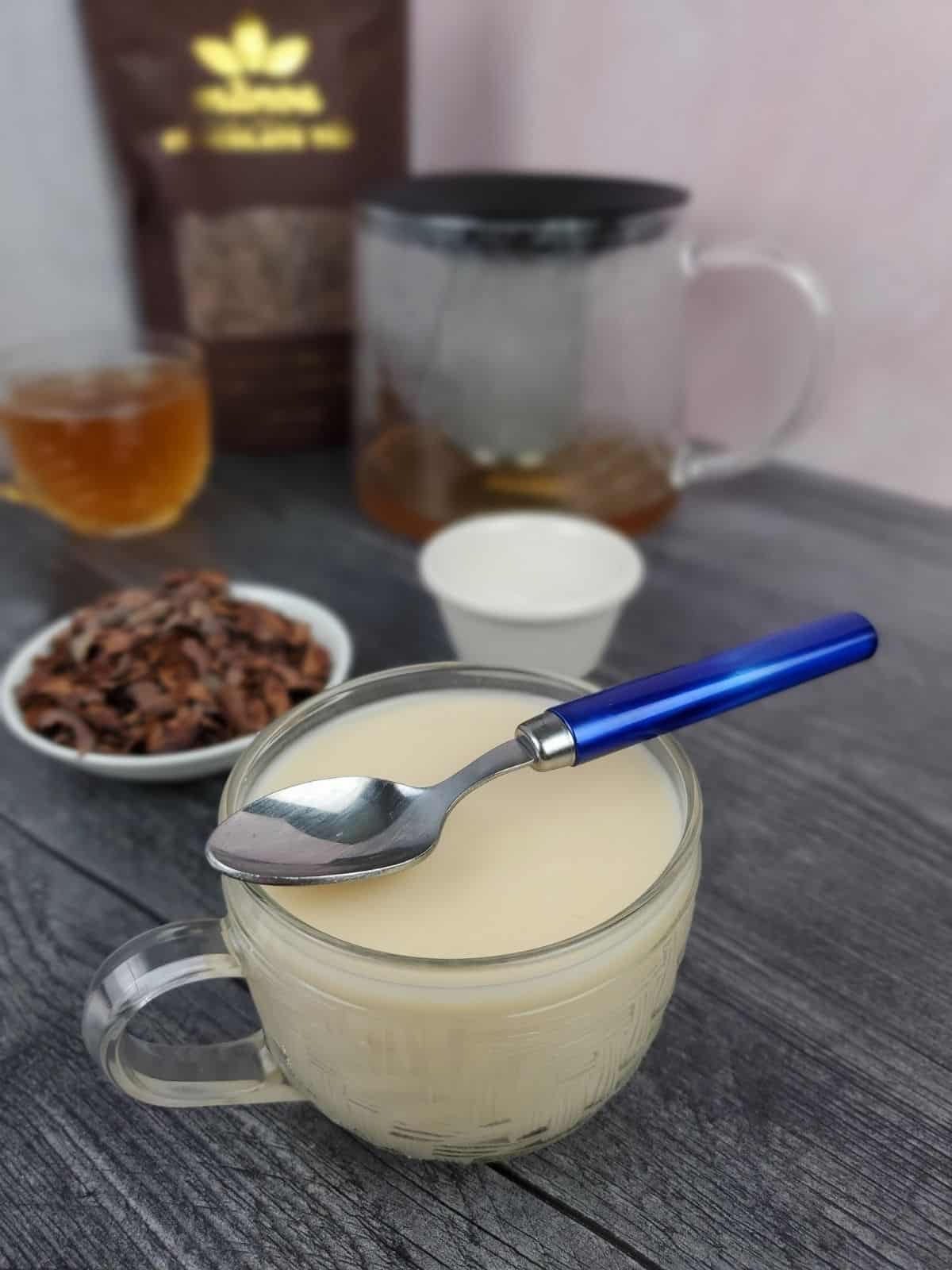
😋 Recipe Substitutions and Variations
Milk Options: If you prefer a creamier texture, consider adding a splash of milk or cream to your cacao tea. You can use whole milk, almond milk, or coconut milk to suit your dietary preferences or to simply add a unique flavor to your cacao tea. Coconut milk, for instance, will give your beverage a bit of a tropical twist.
Sweeteners: Traditional sweeteners like sugar or honey can be replaced with agave nectar, stevia, or maple syrup for a healthier alternative. Adjust the quantity as needed to suit your desired level of sweetness.
- Chocolate Milk Tea - to add a creamy element to your cuppa, try a dollop of heavy cream, a splash of half & half, or some milk of your choosing. You may want to brew the tea stronger, if you plan to add a lot of creamer.
- Adult Cocoa Tea - try an ounce of brandy or whiskey in an evening cup of cocoa tea; for a more indulgent cup, replace that with the same amount of Bailey's.
- Spiced Cacao Tea - adding whole or lightly-crushed spices to the husks or nibs before brewing can transform the flavor of your tea. Spices like allspice, ground nutmeg, and even a dried bay leaf can create a warming flavor profile comparable to Caribbean cocoa tea, which is consumed throughout the region. A blend of cardamom, cinnamon, and a pinch of cayenne pepper can add a little kick, but don't overdo it.
⭐ How to Make Cacao Tea: Step-by-Step
Step 1. Measure out 2 to 3 teaspoons of cacao husks or nibs, or 1 teaspoon of cocoa powder, per cup (8oz.) of water (image 1).
💡 Pro-Tip: If using spices or sweeteners, add them with the cacao nibs or husks.
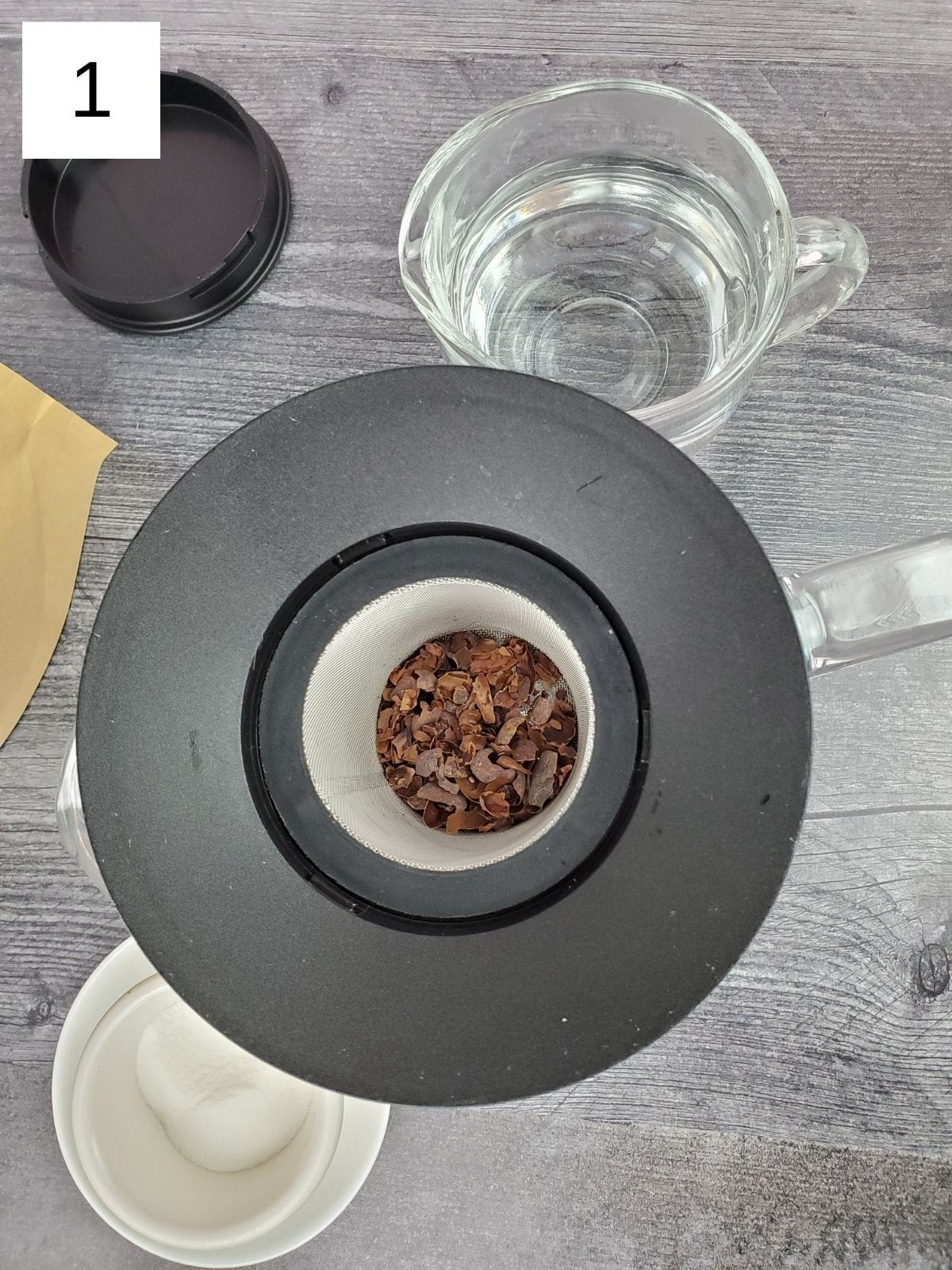
Step 2. Bring the water to a near boil and pour it over the cacao in a teapot or French press, or even in a large metal pot (image 2).
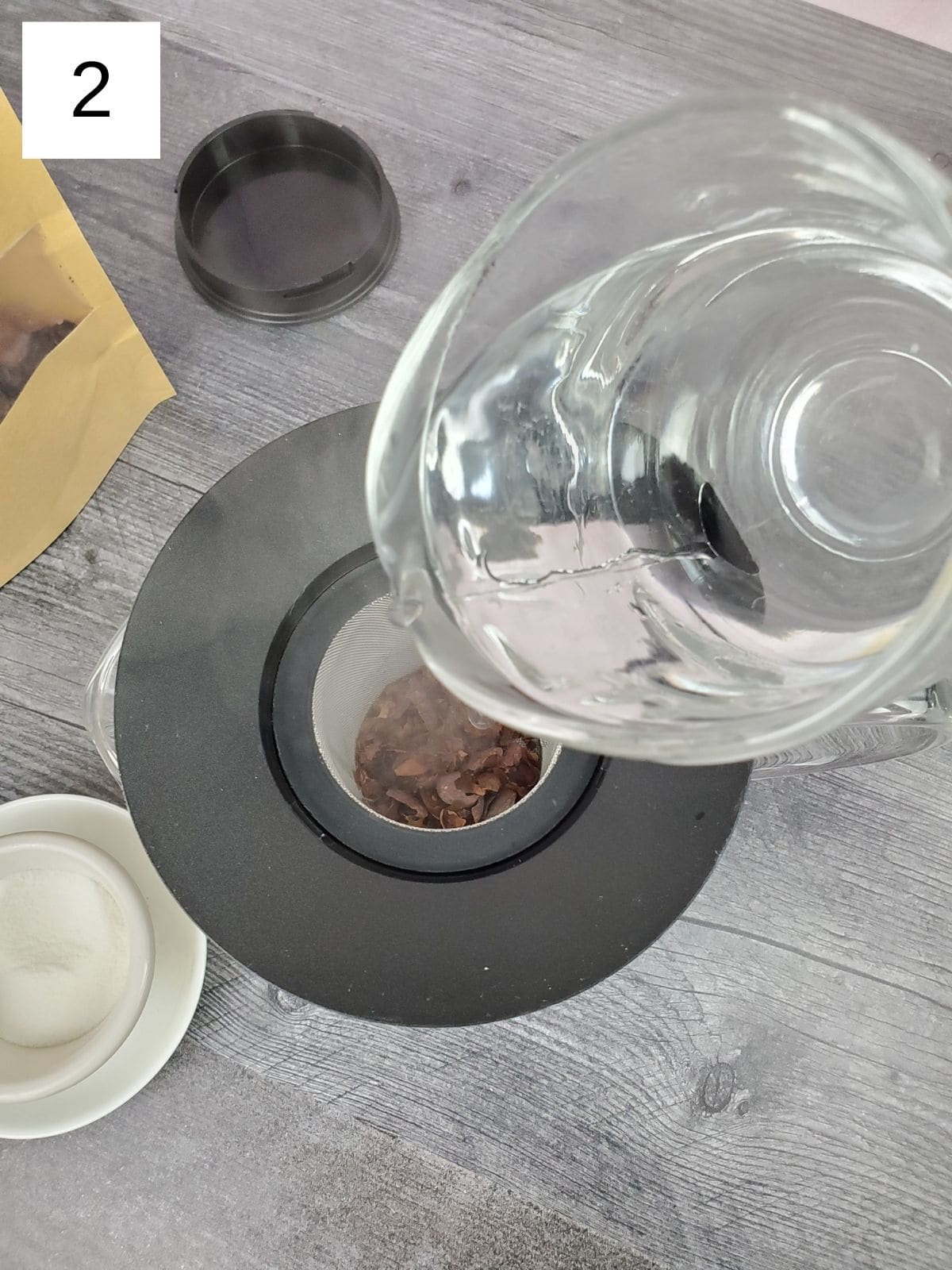
Step 3. Allow the tea to steep for 5 to 10 minutes, depending on your desired strength and flavor (image 3).

Step 4. Once the tea has reached your desired strength (image 4), strain it into a cup and discard the cacao blend (image 5). If you choose to add sweeteners and milk or dairy alternative, do so now, stirring until well combined.
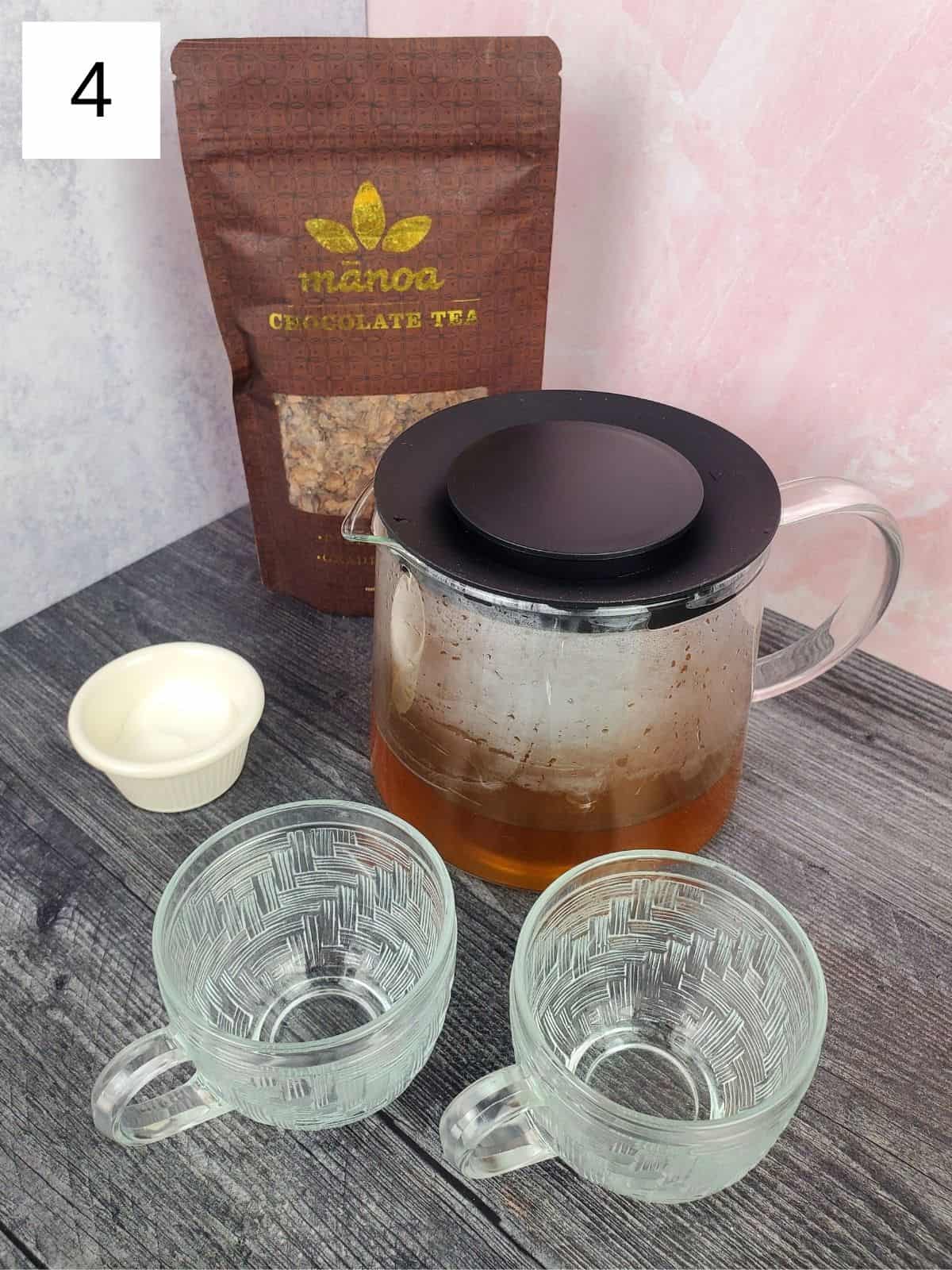

👨🏻🍳 Expert notes & tips
Look to Coffee: If you need to use cocoa powder or another very finely-ground cacao product to brew your tea, consider using a coffee filter to strain out any particulates after brewing, as cocoa powder is quite thoroughly pulverized, and can otherwise make for a silty experience when drinking.
Time the Spices: though you can't really overextract cacao tea, like you could with proper tea leaves, you can certainly underextract them, and the same goes for any spices you add. Be sure to add any crushed or ground spices at the same time as the cacao, and filter out everything at the same time, or any particulates could continue to flavor the brew.
Cacao Tea Storage: though the cacao husks certainly store alright in the pantry for long periods of time, you can also store the brewed chocolate tea in the fridge for up to 5 days, or frozen as ice cubes indefinitely.
☕ Other Chocolate Drinks
🙋🏼 Frequently Asked Questions
Cacao tea has a rich, chocolatey flavor and aroma, reminiscent of dark chocolate with a more delicate and subtle profile. It often has natural sweetness and can carry a variety of flavor notes, ranging from fruity and floral to earthy and nutty, depending on the origin and processing of the cacao beans. I've also heard other people describe it as having a slightly bitter edge, similar to the taste of unsweetened cocoa powder or a high-cacao-content dark chocolate.
In general, cacao husk tea is considered a safe, natural beverage with minimal side effects. However, some people may experience an upset stomach or sensitivity if they consume large amounts of the tea (a liter or more).
Several cacao tea brands offer high-quality products made from pristine cacao husks, generally sourced from their own chocolate making, and therefore already roasted and cleaned for optimal flavor. If you like the chocolate made from them, you'll probably like the cacao husks or nibs they use to make their tea. Some of my personal favorites include Manoa Chocolate and indi Chocolate.
Cacao husk tea does contain a small amount of caffeine, though it's significantly lower than that found in coffee or traditional tea. A typical serving of cacao tea has about 5-20mg of caffeine, depending on extraction time, which is markedly less than the 95mg found in a cup of coffee.
Cacao tea is not known to cause sleepiness, and it only contains a mild amount of caffeine. But rather, the tea offers a sense of relaxation and improved mood for many drinkers, creating a calming effect that may help you unwind without causing drowsiness.
Not really. Unlike tea leaves, you can't oversteep cacao tea. Though I wouldn't recommend leaving the husks in once it's gotten as strong as you like it, as they can start to fall apart after a day or two stored in the fridge.
📖 Recipe

How to Make Cacao Tea (3 Ways)
Equipment
- tea pot or kettle
Ingredients
- 2-3 teaspoons cacao husks alt. cocoa nibs or 1 teaspoon cocoa powder
- 1 cup water
- 1 tablespoon sweetener optional
- ¼ cup milk optional
Instructions
- Measure out 2 to 3 teaspoons of cacao husks or nibs, or 1 teaspoon of cocoa powder, per cup (8oz.) of water.
- Bring the water to a near boil and pour it over the cacao in a teapot or French press, or even in a large metal pot.
- Allow the tea to steep for 5 to 10 minutes, depending on your desired strength and flavor.
- Once the tea has reached your desired strength, strain it into a cup and discard the cacao blend. If you choose to add sweeteners and milk or dairy alternative, do so now, stirring until well combined.













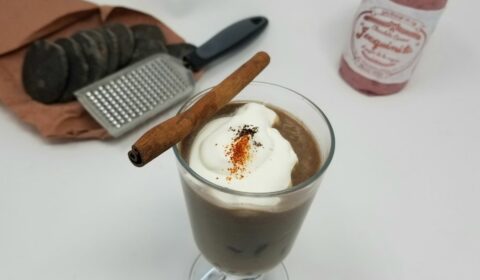
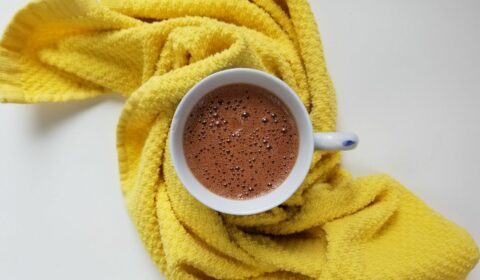
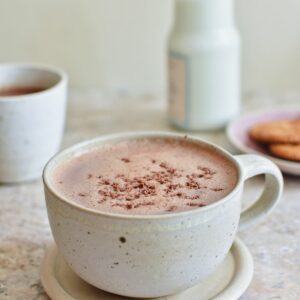
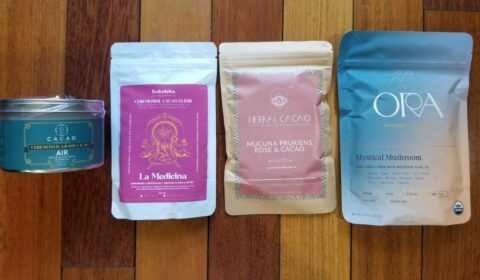
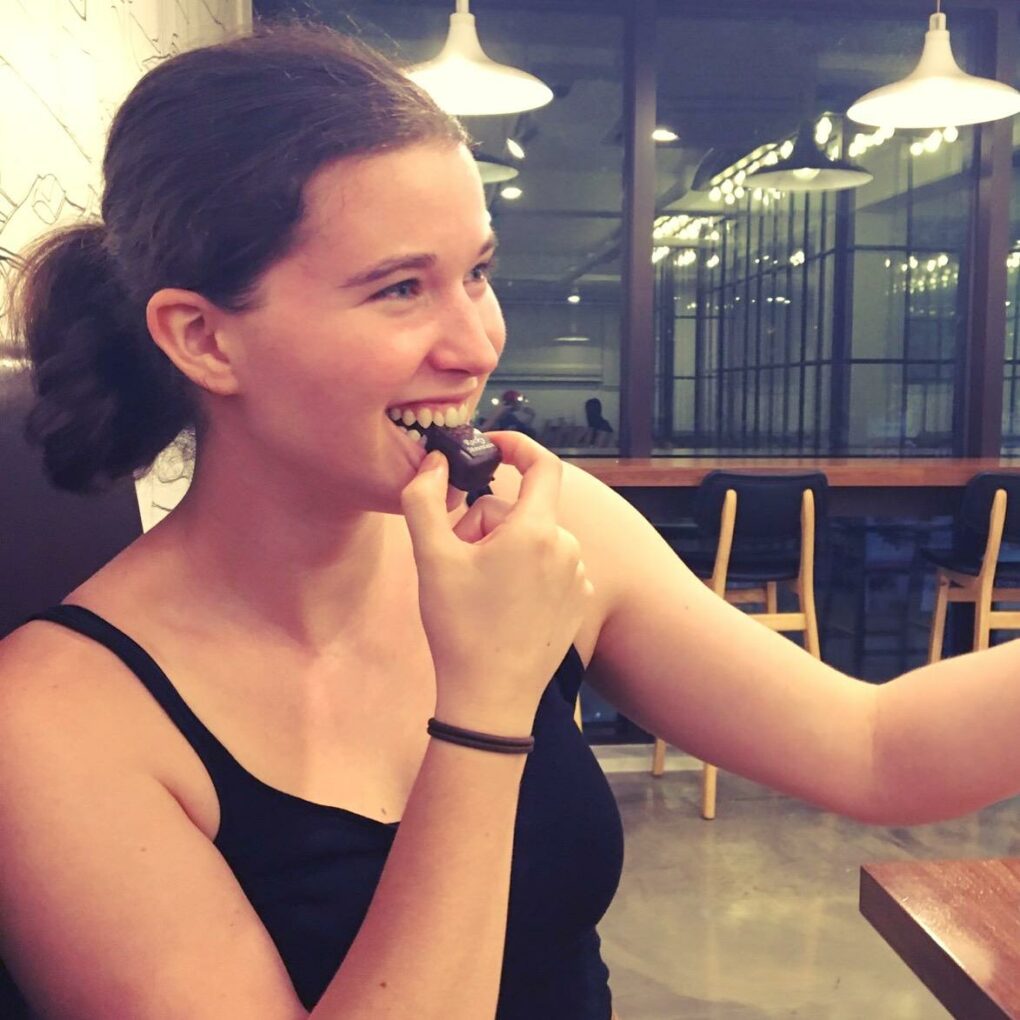

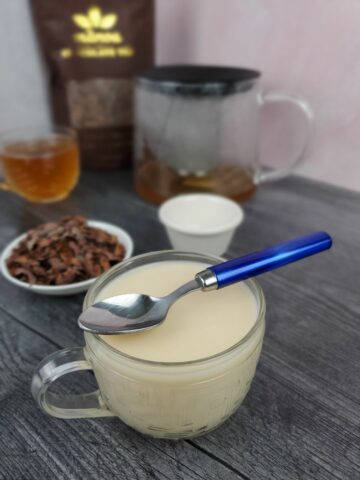
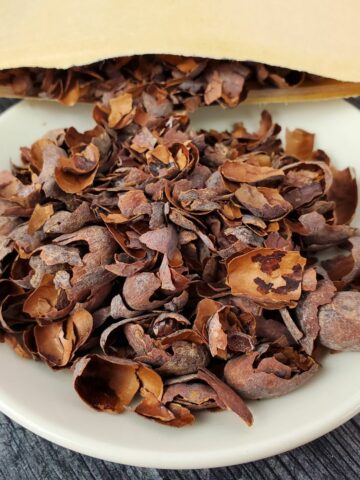
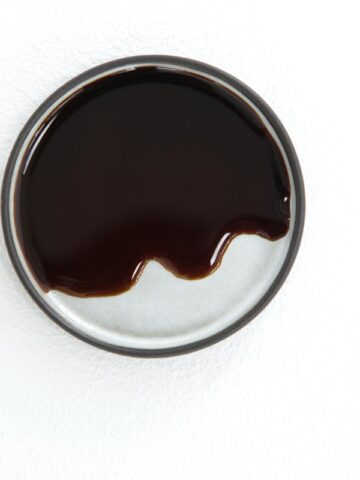
Comments
No Comments